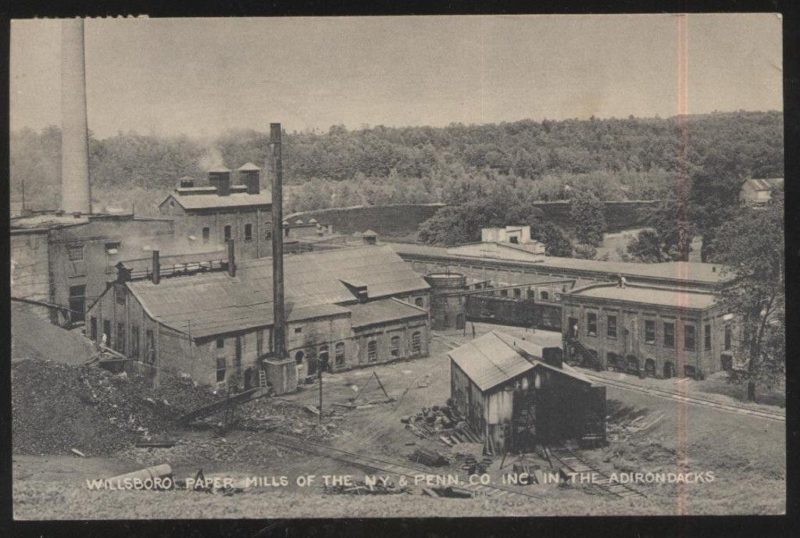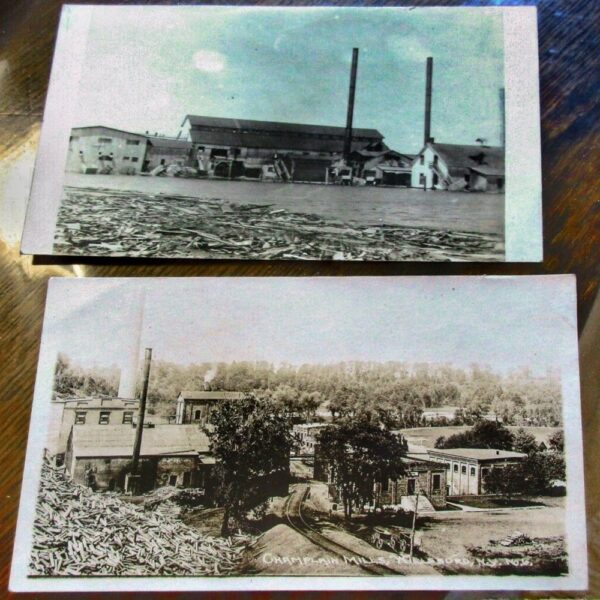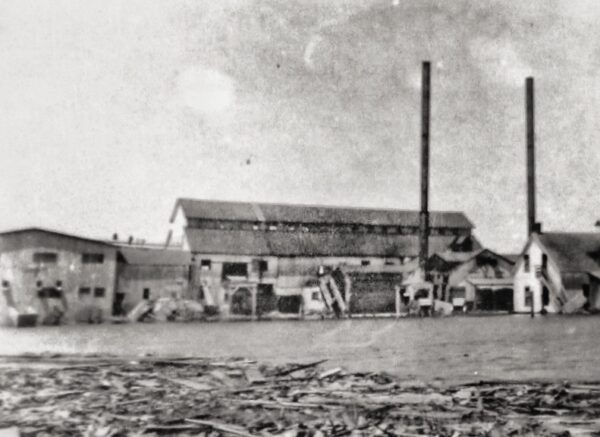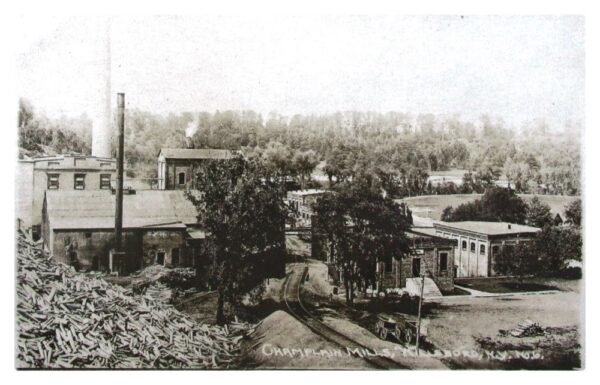We return today to Willsboro’s industrial Boquet River shoreline a century and more ago. This follow-up to “Willsboro Mills Circa 1912: Grist Mill, Saw Mill, and Paper Mill” includes three intriguing glimpses of this once thriving site of which only a hint remains today.

The aerial photograph on this vintage postcard above offers a birds-eye view of the former Willsboro paper mill (NY & Penn. Co. Inc.) in the 1920’s. For many of us this is a fresh perspective on the now defunct — and mostly dismantled — paper plant that was located on the roughly opposite the Phoenix Mills originally built and owned by William D. Ross.
Although the Boquet River is not visible behind the long narrow building and trees, the area beyond that resembles a small gray/black pond was still present until a couple of years ago. The veritable sea of black, sooty powder (apparently a byproduct of paper processing) inhibited vegetation, casting an eerie atmosphere over this otherwise pleasant stretch of river where I occasionally went fly fishing during my first few years in Essex. Fortunately the waste has been cleaned up.
It’s possible that Phoenix Mills (aka W.D. Ross Mill, originally owned by William D. Ross who built Rosslyn) is partially visible near top right of the photograph. I’m not 100% confident that I’m right because it seems to belong closer to the middle of the right side (i.e. riverside, just below the dam), but I don’t see anything there. And, so long as I can recall, I don’t remember another significant building in the proximity of the roof visible in that photograph (except for the more modern sewage treatment plant now present.)
Postmarked 1951, this rare view of the pulp-to-paper plant is notable for another reason. It’s an aerial photograph! No drones in the 1920s… It would be interesting to try and duplicate this perspective today.

The earlier views of the Willsboro paper mill, circa 1900 are also reproduced from antique postcards. I no longer recall when/where/how I documented these, but I have adapted the following closeups (with limited success, given the poor focus and definition of the original).

This perspective appears to have been from the other side of the river? Lots and lots of buildings and two monumental smoke or steam stack. (Note the third off white stack visible in the image below.)

Or given the massive pile of lumber and bottom left in this final photograph, it’s also possible that the lumber visible in the preceding image is the tailings at the base of that pile, not lumber floating on the river. I’m also intrigued by the railroad track bisecting the Willsboro paper mill grounds. Thriving industry a century ago where crickets preside today.
What do you think?